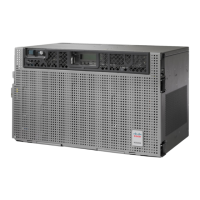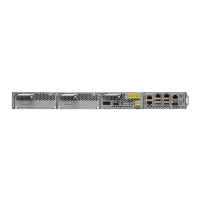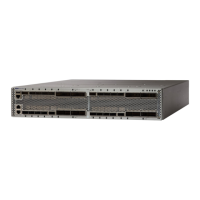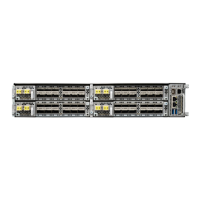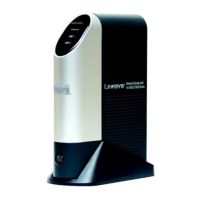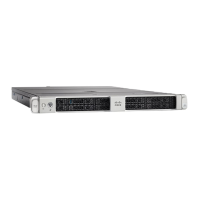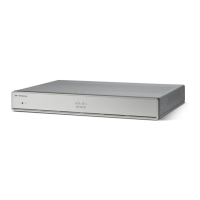Step 8 Verify the proper cabling of the alarmed ADD_RX port on the 32MUX-O or 40MUX card:
a) Verify that the ADD_RX port of the alarmed 32MUX-O or 40MUX is connected to the DROP_TX port of the coupled
32DMX-O or 40DMX card on the opposite side of the node, using two MPO-LC multifiber cables.
A patch-panel tray is normally used to manage fiber connections (for patch-panel cabling details, refer to
the Turn Up a Node chapter in the Configuration guide).
Note
b) Verify that the power value coming out of the DROP_TX port of the coupled 32DMX-O card is correct:
• In card view, click the Provisioning > Optical Chn> Parameters tabs.
• The Power field value must be the same as that in the VOA Power Ref field. If it is not, take the appropriate
corrective action for the alarm according to Alarm Troubleshooting, on page 99
c) Check (the number [1 to 8] must correspond with the wavelength managed) and clean the LC fan-out according to
site practice.
d) Repeat Step Condition B2 - OPWR-LowDEGrade Alarm, on page 90 for the MPO-LC multifiber cable coming out
of the DROP_TX port of the coupled 32DMX-O or 40DMX card.
e) Check and, if necessary, clean the LC-LC adapter used.
f) If necessary, replace any bad devices (maximum tolerance is 1 dB).
If no site practice exists for cleaning fibers, complete the procedure in the Maintain the Node chapter of
the Configuration guide.
Note
If the alarm condition persists even after the cable check and repair procedures, the root cause could be
related to a network issue and a more accurate analysis of the signal flow is needed according with the
actual system topology. If necessary, call Cisco TAC (1 800 553-2447) for help.
Note
Scenario C: Optical Drop Power Level Lower Than Expected
This scenario describes the condition in which the optical power at the 32DMX-O or 40DMX drop channels
is lower than expected. The 32DMX-O card is equipped with a VOA for each wavelength, and each VOA
manages the power for one dropped wavelength.
The failing scenarios during the OCHNC turn-up and consequent VOA startup are the same as those described
in the Scenario B: Optical Power Level of the Incoming Signal Lower Than Expected, on page 86. The only
difference is the type of alarm that is raised when the condition exists in which Delta Power is greater than 6
dB.
Condition C1—Delta Power > 6 dB Lower than Expected
When the optical power on the dropped channel is more than 6 dB lower that the value expected, the final
VOA Power Reference setpoint value is definitively not reachable. As a consequence, the final conditions
reported in CTC are as follows:
• An OPWR-LFAIL (OCH layer) alarm is present on the port associated with the VOA.
• A valid optical power value (different from the end of scale value of –50 dBm) can be read in the CTC
Power field, but the Power value is less than –33 dBm. (To view this value in card view, click the
Provisioning > Parameters tabs.)
Cisco NCS 2000 series Troubleshooting Guide, Release 11.0
92
General Troubleshooting
Scenario C: Optical Drop Power Level Lower Than Expected
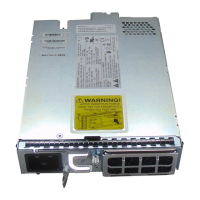
